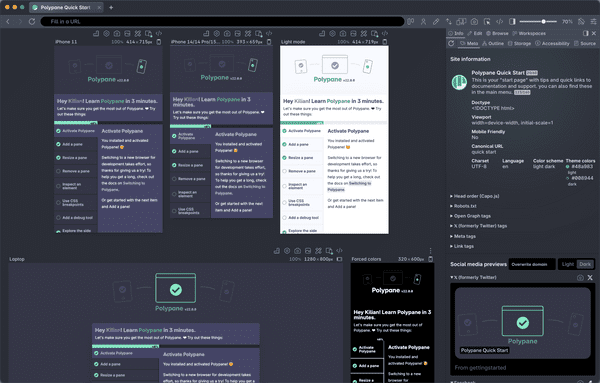Documentation
Learn how Polypane improves your workflow
Simulators
The Simulators available for panes contain a wide range of different simulations to experience how different impairments affect the way you interact with a page. They are available in the debug tools popup, which you can open by clicking the pen-and-ruler icon above each pane.
This popup contains both simulators and debug tools in two separate tabs. To learn more about the debug tools, read the Debug tools documentation.
When a debug tool is active, you can clear it with the "X [debug tool]" button at the top of the popup and reload it with the "re-apply" button
There are over 40 different simulators and debug tools available split into different categories, ranging from color blindness simulators to text contrast checkers to disabling CSS and JS. Do you have an idea for a useful Simulator? Let us know.
Polypane is filled with accessibility features. We wrote a full overview on our blog: Find and fix accessibility issues with Polypane.
Quick Mouse interactions
- Clicking the debug tool icon with your primary mouse icon will open the debug tool popup.
- Right-clicking the debug tool icon will reload the currently selected debug tools, useful for debug tools like the color contrast checker (after changes to the page) or the chaos content debug tool to apply new random content.
- Middle clicking the debug tool icon removes the current debug tool. Holding ⇧ while middle clicking will remove the debug tools from all panes.
Hold ⇧ while adding a debug tool will apply it to all panes.
Overview of all Simulators
Polypane has over 40 Simulators and Debug tools (which have their own page).
For more information on them inside Polypane you can hover the icon to the right of each overlay in the popup.
A note on color blindness
We simulate all 8 types of color blindness. Together they affect roughly 1 in 12 men (8%) and one in 200 women in the world.
Between the simulators ending in "*omaly" and "*opia", the "*opia" ones count as "full" color blindness for that type, while "*omaly" is a milder version.
The chosen values for the "*omaly" options are averages but people with "*omaly" color blindness can be at any place on the spectrum between no color blindness and full color blindness, so be aware of that. Additionally, it's important to realise that these simulators only simulate, and will actually differ from what any individual with a color deficiency will see. Use these simulators to make broad changes for things clearly broken, rather than making small tweaks to something you find aesthetically pleasing.
For more info about the color blindness simulators, read our article Developing for color blindness with Polypane.
Red-green color blindness
The most common forms or color blindness all fall under Red-Green color blindness:
Protanomaly

Protanopia

Deuteranomaly

Deuteranopia

Blue-yellow color blindness
Less prevalent are Blue-yellow colorblindness. 0.02% of the worldwide population has this.
Tritanomaly

Tritanopia

Full color blindness
Full, or near-full loss of color is incredibly rare and affects less than 0.0001% of worldwide population.
Achromatopsia
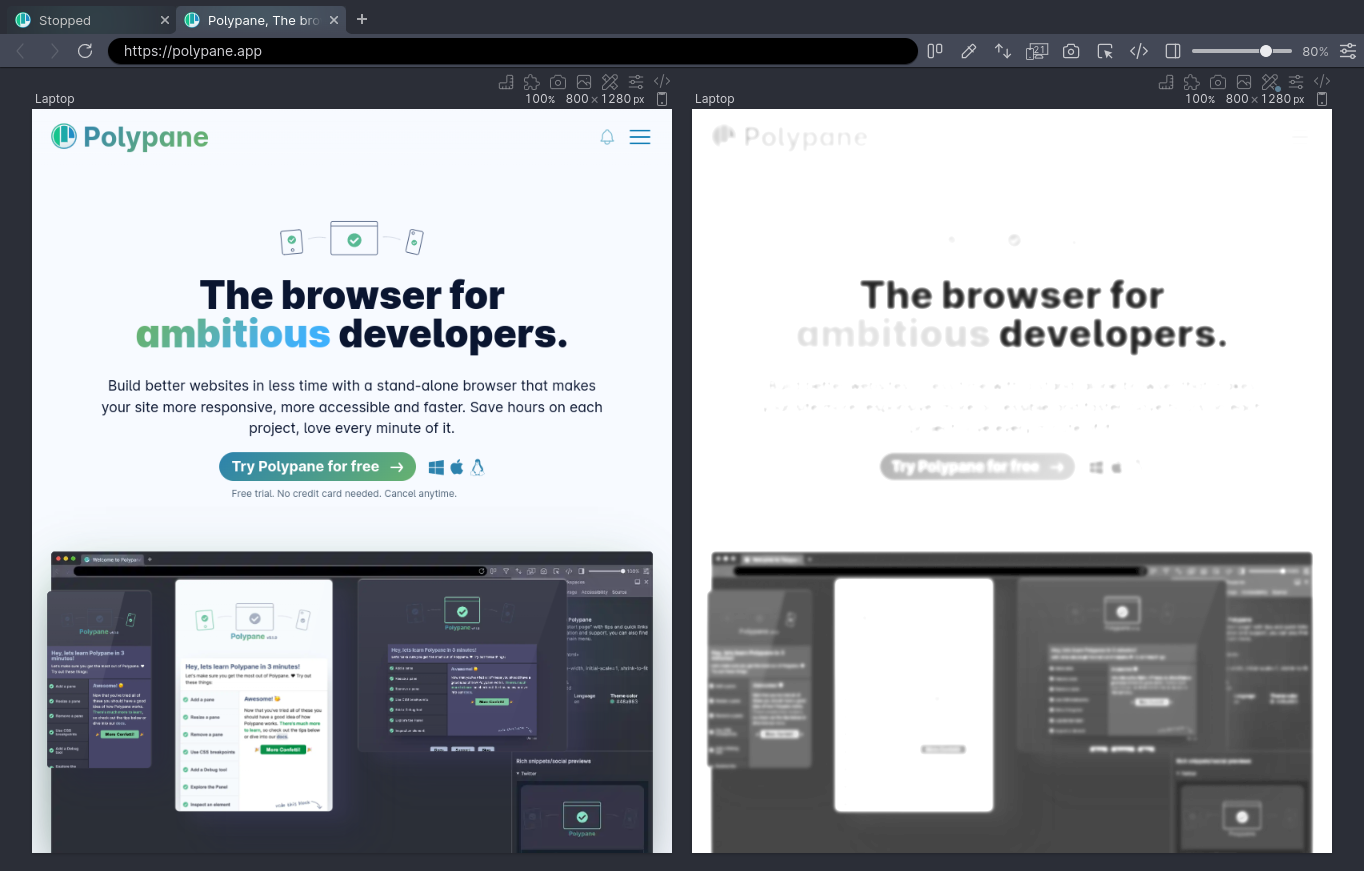
Achromatomaly

Achromatopsia (cerebral)
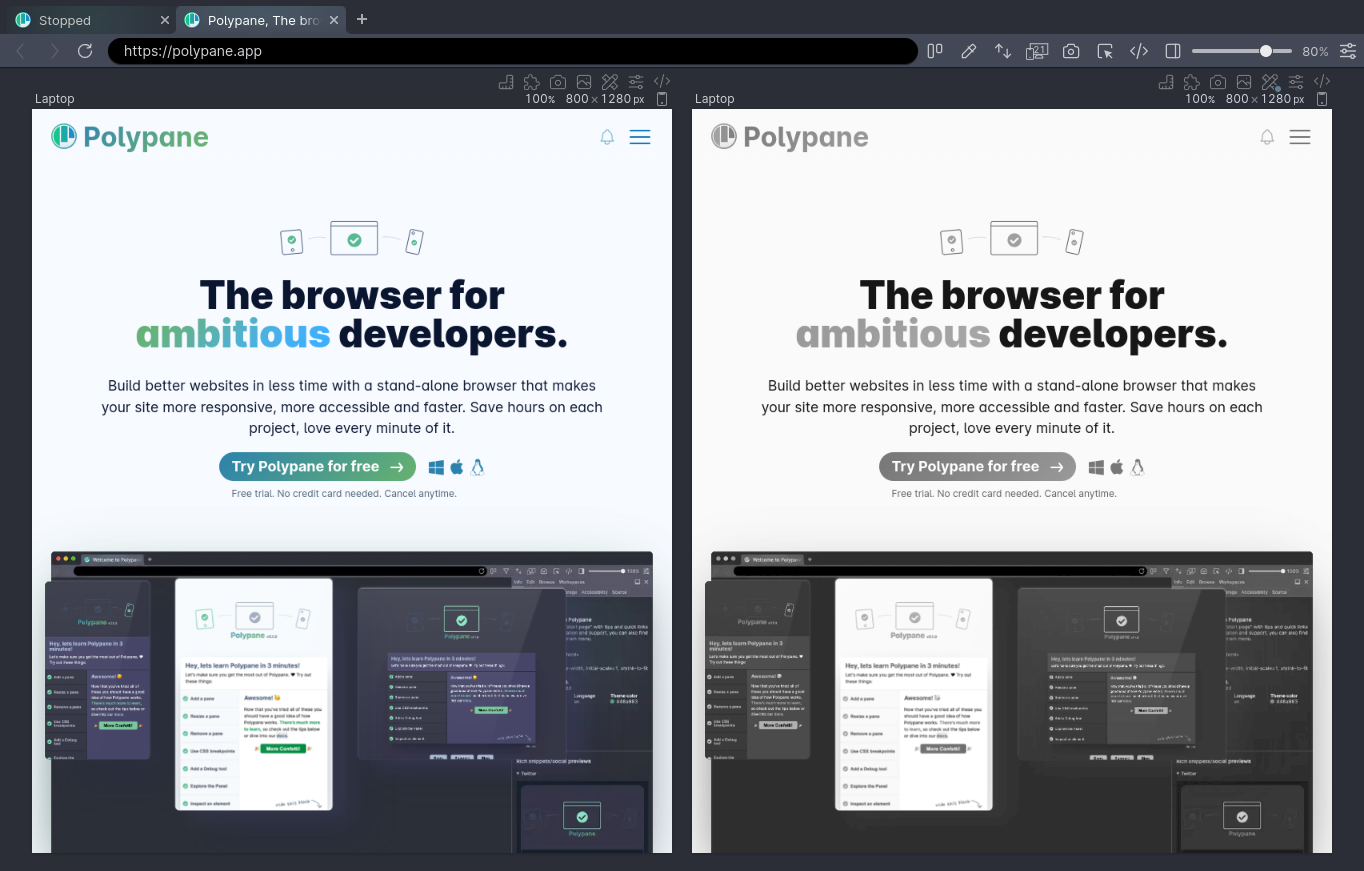
Visual impairments
Other visual impairments usually blur or dull someone's vision. As people get older, these become more prevalent.
Cataracts
Blurs and clouds vision
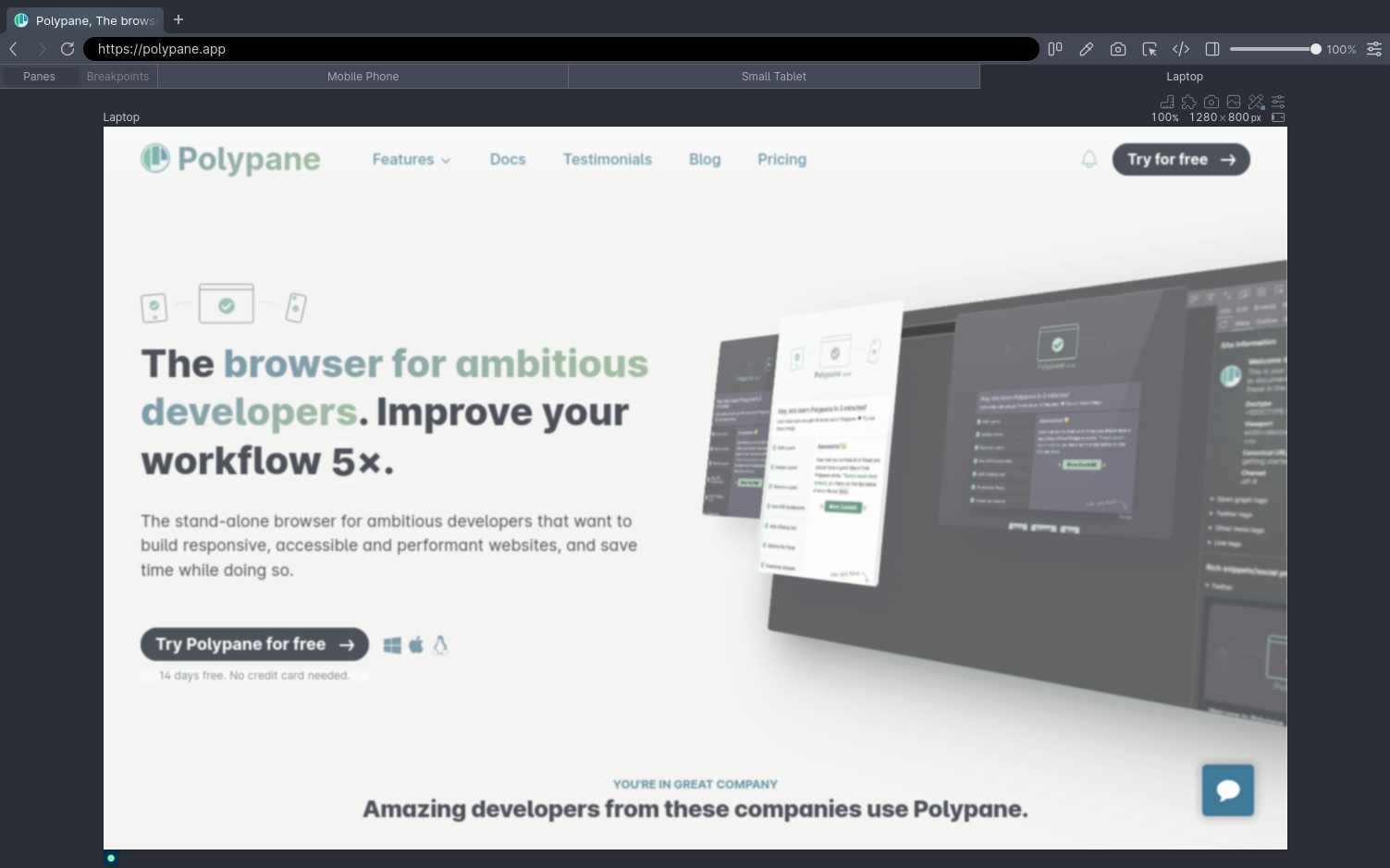
Glaucoma (interactive)
Blurs vision, especially around the peripheral vision. Use your cursor to bring different parts of the page into focus. The page remains interactive.
Farsightedness Makes it difficult to see details up close.

Astigmatism
Blurring and ghosting of the vision in a single direction. Polypane has emulation for horizontal and vertical astigmatism.
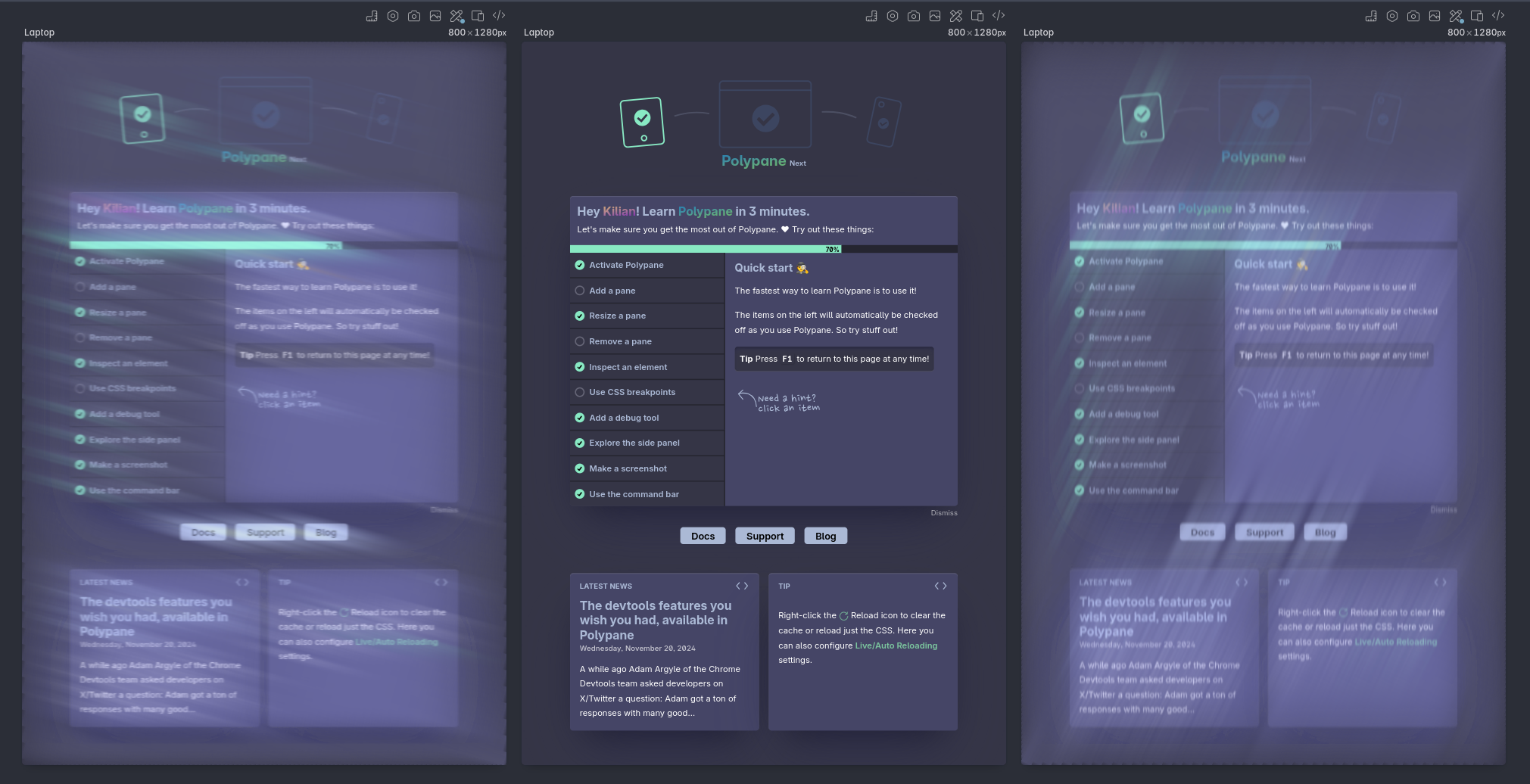
The Astigmatism filters are built by Kuba.
The astimatism filters are not visible on screenshots. This might change in the future.
Tunnel vision
Tunnel vision is the loss of peripheral vision, leaving just the center of your vision. It has a wide range of causes, from permanent (advanced Glaucoma) to temporary (altitude sickness) to situational (wearing goggles). This simulation will follow your mouse cursor as a way to simulate the loss of peripheral vision.
Macular degeneration
The macula is the part of the retina that is responsible for central vision. Macular degeneration is the loss of that central vision. This simulation will follow your mouse cursor as a way to simulate the loss of central vision.
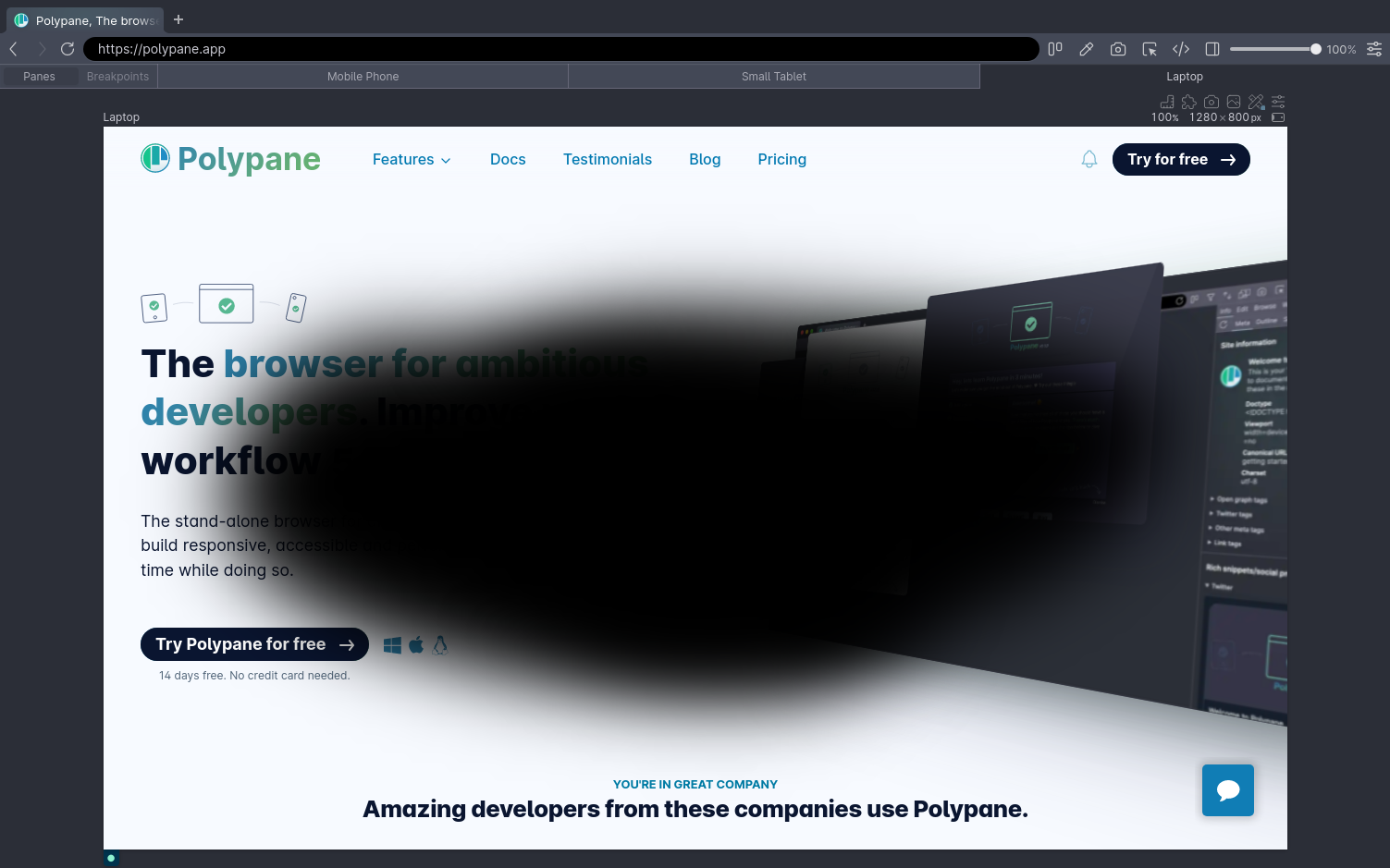
CMV Retinitis
causes specks in your vision and is caused by the cytomegalovirus in immunocompromised people.
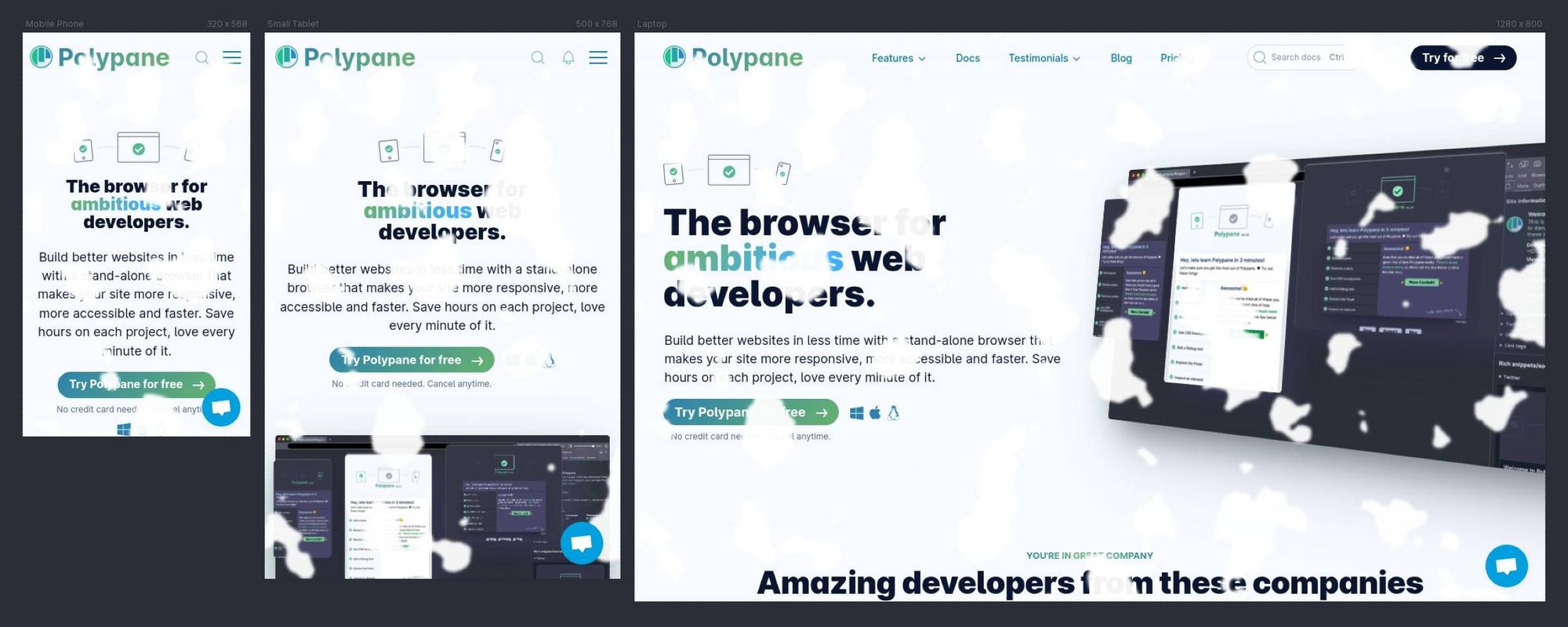
Photophobia
A sensitivity to light.
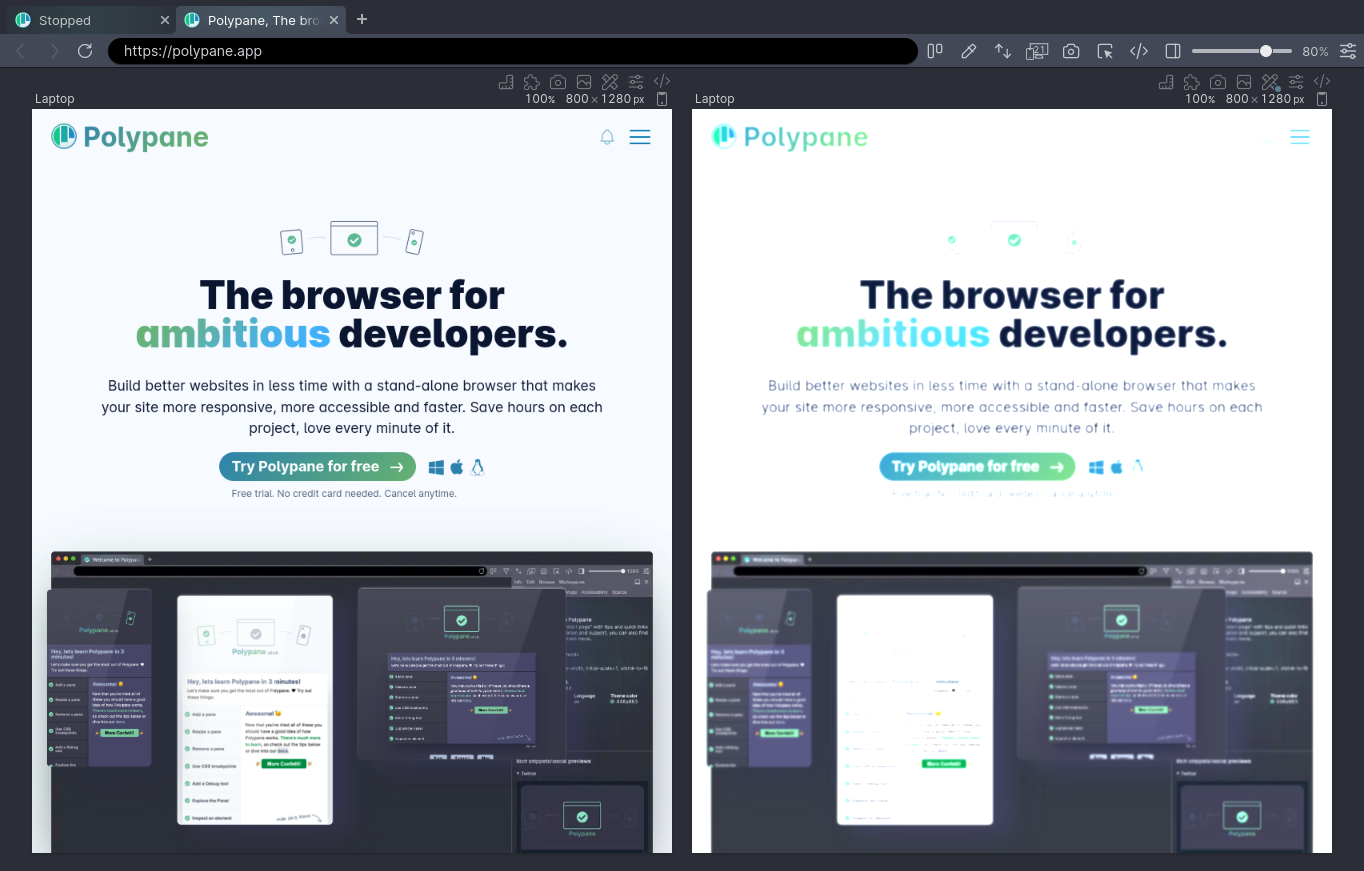
Bright sunshine
Colors get washed out and low contrast parts of your page become invisible when watching a screen in bright sunlight.

Dimmed Screen
Emulates a desktop screen at 40% brightness or a mobile phone with brightness turned all the way down.
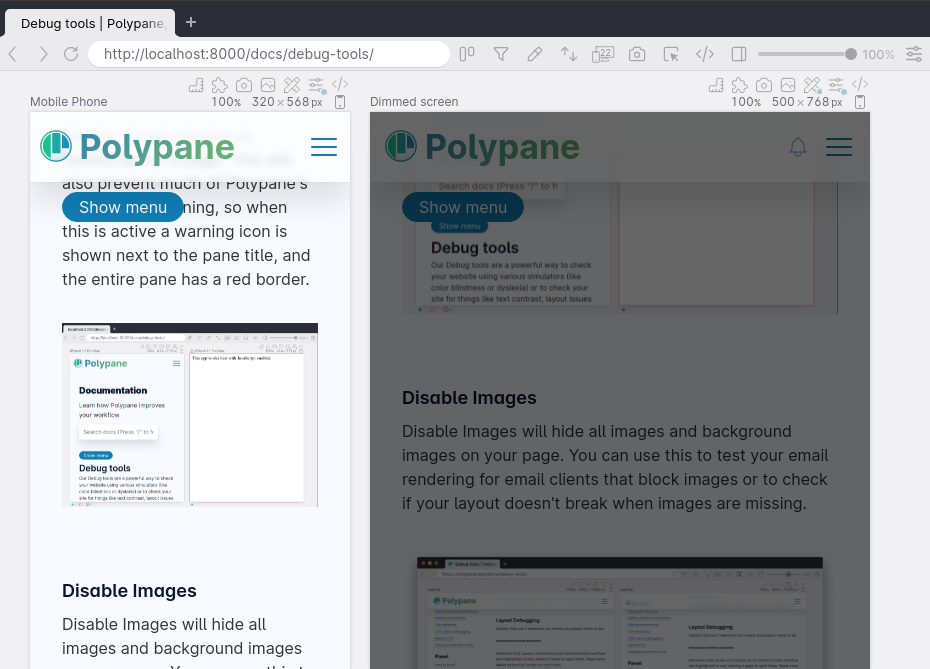
Night mode
Many devices have a night mode, that lowers the blue colors and increases the red colors for a more pleasant display when there is less light.

Dyslexia
Dyslexia affects 5 to 10% of the population worldwide, but it might be as high as 17% as not all dyslexia is diagnosed.
There is no single way to simulate dyslexia as it affects different people in different ways. Our simulator makes you aware of the reading difficulty it brings.
Add your own
Do you have an idea for a useful Debug tool? Let us know.
Have a question about Polypane?
Reach out via (real human) chat, Slack or our contact form:
Contact SupportBuild your next project with Polypane
- Use all features on all plans
- On Mac, Windows and Linux
- 14-day free trial – no credit card needed
